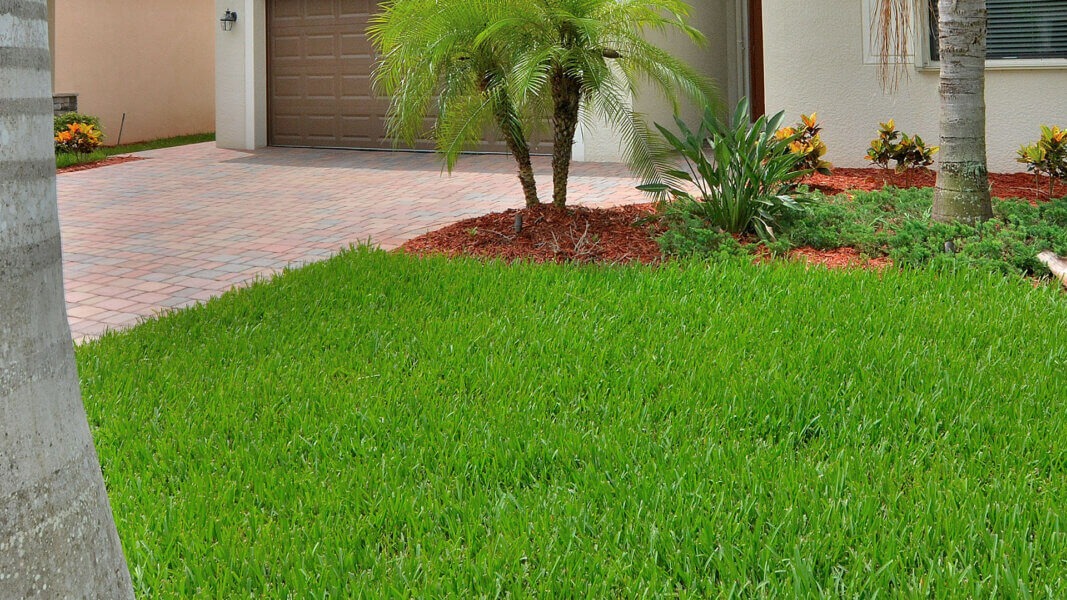Landscaper Tips for Maintaining a Healthy Lawn Year-Round
For many homeowners in North Carolina, a thick, vibrant lawn is the centerpiece of their outdoor space. It enhances curb appeal, provides a soft surface for recreation, and serves as the green canvas for the rest of the landscape. However, achieving and maintaining this ideal year-round in the challenging Charlotte climate can be a constant struggle. Homeowners often find themselves reacting to problems—like summer brown patches or an invasion of winter weeds—rather than preventing them.
This reactive approach often leads to wasted time, money, and frustratingly inconsistent results. The key to a truly healthy lawn is not a single secret product, but a proactive and strategic maintenance calendar that adapts to the changing seasons. A thriving lawn requires different types of care in the spring, summer, fall, and winter to prepare it for upcoming stress and help it recover from previous challenges. This article provides a seasonal guide with expert tips to help you understand what your lawn needs, and when it needs it, to stay healthy and beautiful throughout the entire year.
Spring (March – May): The Awakening
As temperatures rise and the days grow longer, your lawn awakens from winter dormancy. This is a critical time to provide the right care to encourage vigorous, healthy growth and prepare it for the heat of summer.
Clean-Up and Initial Assessment
Your first task of the season is to gently rake the entire lawn to remove any lingering leaves, twigs, and other debris that accumulated over the winter. This allows sunlight and air to reach the soil and grass crowns. As you clean, assess the turf for any matted patches caused by snow mold or any areas that appear thin or bare, making a note of them for potential repair later in the season.
Soil Testing and Fertilization
Don’t guess what your lawn needs. A simple soil test from a local extension office can provide invaluable information about your soil’s pH and nutrient levels. Based on these results, you can apply the right type of slow-release fertilizer. A balanced spring feeding will replenish the nutrients used during the initial green-up, providing the energy your lawn needs to develop strong roots and lush top growth.
Pre-Emergent Weed Control
This is one of the most important proactive steps you can take. Pre-emergent herbicides work by creating a barrier in the soil that prevents weed seeds, like those from crabgrass, from successfully germinating. The timing is absolutely critical—these must be applied before the soil temperature consistently reaches 55 degrees Fahrenheit. Applying a pre-emergent at the right time in early spring will save you from battling stubborn weeds all summer long.
The First Mow of the Season
Resist the urge to mow too early. Wait until the grass is actively growing and needs a cut. For your first few mows, set the blade to the highest setting for your grass type (typically 3-3.5 inches for Tall Fescue). Mowing high encourages the grass to develop a deeper, more resilient root system, which is essential for surviving the summer heat to come. As a rule, never remove more than one-third of the grass blade in a single mowing.
Summer (June – August): Surviving the Stress
The intense heat and humidity of a Charlotte summer puts immense stress on any lawn. The goal during these months is not to encourage rapid growth, but to help the turf survive and maintain its health.
Smart Watering Practices
Proper watering is the key to summer survival. It’s far better to water deeply and infrequently than to apply a light sprinkle every day. This encourages roots to grow deeper in search of water, making the lawn more drought-tolerant. The best time to water is in the early morning, between 4 a.m. and 9 a.m., which minimizes evaporation and reduces the risk of fungal diseases. Your lawn needs approximately one inch of water per week, either from rainfall or irrigation.
Continue Mowing High
Maintain your high mower setting throughout the summer. The taller grass blades provide crucial shade for the soil, which keeps it cooler, helps it retain moisture, and prevents opportunistic weeds from getting the sunlight they need to sprout. A sharp mower blade is also essential; a dull blade tears the grass, leaving it vulnerable to disease and causing a brownish tint.
Grub and Pest Management
Summer is peak season for lawn-damaging insects like Japanese beetles and June bugs, whose larvae (grubs) feast on grass roots. Be on the lookout for signs of grub damage, such as irregular brown patches that you can lift up like a piece of carpet. A professional can diagnose the issue and apply a targeted curative treatment to prevent further damage.
Fall (September – November): The Crucial Recovery Period
Fall is arguably the most important season for lawn care in our region, especially for cool-season grasses like Tall Fescue. The cooler temperatures provide the perfect opportunity for the lawn to recover from summer stress and prepare for winter.
Core Aeration and Overseeding
If you do only one thing for your fescue lawn, this should be it. Core aeration involves pulling small plugs of soil from the lawn to relieve compaction. This allows air, water, and nutrients to penetrate deep into the root zone. Immediately following aeration with overseeding—spreading new grass seed over the existing turf—is the best way to fill in thin spots, improve turf density, and introduce stronger grass varieties into your lawn.
The Most Important Fertilization
A fall fertilizer application is the most critical feeding of the year. This application doesn’t promote heavy top growth; instead, it delivers the essential nutrients the grass needs to recover from summer damage, develop a robust root system, and store energy for the winter. This single step will result in a healthier lawn that greens up much faster the following spring.
Leaf Management
Don’t let fallen leaves smother your lawn. A thick layer of leaves will block sunlight, trap moisture, and can promote disease. You can either rake them regularly or, if the layer is not too thick, mulch them with your lawnmower. Mulching chops the leaves into fine particles that will decompose and return valuable organic matter to the soil.
Winter (December – February): The Dormant Period
During the winter, your lawn is not dead, but dormant. While it requires less active care, a few simple tasks can protect it and ensure it’s ready for spring.
Final Clean-Up and Mow
Before the lawn goes fully dormant, perform a final clean-up to remove any remaining leaves or debris. Give the lawn one last mow, slightly lowering the blade height. This helps prevent winter fungal diseases like snow mold from developing on long, matted grass.
Minimize Foot Traffic
Try to stay off the lawn as much as possible, especially during periods of frost. Walking on frozen grass blades can break them and damage the plant’s crown, potentially leading to dead spots that will be visible in the spring.
Plan for the Year Ahead
Winter is the perfect time to assess last year’s results and plan for the future. If you struggled with weeds, pests, or thin areas, now is the time to consult with a professional landscaper. The team at JH Landscapes can work with you to develop a comprehensive, year-round lawn care program tailored to your property’s specific needs, ensuring a healthier lawn for the upcoming year.
Frequently Asked Questions
What is the most common type of lawn grass in the Charlotte area?
Tall Fescue is the most popular cool-season grass because it can stay green year-round with proper care. However, warm-season grasses like Bermuda and Zoysia are also used, as they are more tolerant of extreme heat and drought but go dormant and turn brown in the winter.
How do I know when my lawn needs water?
Look for signs of drought stress. The grass may take on a bluish-gray tint, or the blades may begin to curl. A simple test is to walk across the lawn; if your footprints remain visible for a long time, the grass blades don’t have enough moisture to spring back.
Is it better to bag or mulch my grass clippings?
For a healthy, disease-free lawn, mulching is highly recommended. The small clippings break down quickly, returning nitrogen and other valuable nutrients to the soil. You should only consider bagging if the grass is excessively long, wet, or if you are dealing with a fungal disease.
Why is my lawn full of weeds even though I fertilize it?
Fertilizer provides food for everything—including weeds. A healthy lawn is a result of a complete program, not just one step. To control weeds, you need a strategic approach that includes pre-emergent treatments in the spring, post-emergent control for existing weeds, and proper mowing and watering to promote a thick turf that can naturally crowd out weeds.
About JH Landscapes
At JH Landscapes, we understand that a healthy lawn is the foundation of a beautiful landscape. Our team applies horticultural science and local expertise to deliver professional lawn care programs tailored to the Charlotte climate. From fertilization and weed control to aeration, we provide the expert services needed to keep your turf thriving year-round.
Business Name: JH Landscapes
Address: 2307 Waxhaw-Marvin Rd, Waxhaw, NC 28173
Phone number: (704) 999-0976




